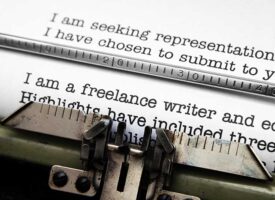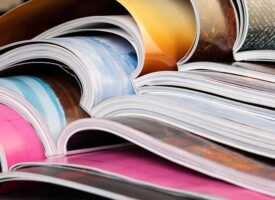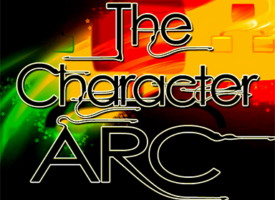You are relaxing at your favorite local bookstore perusing the magazine racks. You notice a genealogy magazine that was unfamiliar to you. You pick it up and the idea light bulb in your brain starts flashing. Perhaps you could write something about the long lost uncle you discovered via some recent family history research that you did, and have it published in this particular publication. You pull out a scrap of paper and jot down the correctly spelled name of the editor, just in case.
You do a web search to read about the writer’s guidelines for this and some other genealogy periodicals to learn which publication might be most appropriate for the specific type of article you think you might write. You learn that some of the magazines want a completed manuscript either emailed to them via cut and paste within the body of the message and that other publications want to see you finished work as an attachment. Still other magazines prefer the old fashioned way of using the US Mail.
But the majority of magazines, either print or online venues may first want to see a query letter from you. Magazine editors are very busy people; most have little time to read lengthy manuscripts sent by novices like you and would much prefer reading a succinct one-page query that many pages of a completed article that is too much like something they recently published or simply not something they have an interest in. So how does a novice or even an experienced writer transform “thought” into “bought”?
Be very familiar with the magazine before sending a query.
Scrutinize at least two issues of the magazine to see what other writers have published. 
- How long are the titles?
- Are articles written in first person, third person or some other point of view?
- Are there quotations, statistics, or references sited to specific web sites or other sources?
- Does the article have sub-headings?
- How many subheadings are there?
- How long do paragraphs appear to be?
- Does the article appear to be SEO (search engine optimization) friendly?
- Are there photographs? How many photos are there?
- Do the articles have sidebars? How many sidebars are there?
- Is there an author biography?
- What information does the author bio include and how long is it?
Always keep these details firmly in mind when envisioning how your article will look before presenting your idea in your query letter.
QUERY PART 1: Write the first paragraph of your proposed article.
Whether you are a third grader learning how to write prose or a seasoned freelance writer, you already know that the first paragraph has to be the attention getter, the hook. A captivating introduction to your article is the dealmaker or deal-breaker. Will the reader find it worth his or her time to read the rest of your article? Making your first paragraph SEO friendly is a good strategy to increase your chances of getting published. Use this well-written enticing first paragraph in your query letter verbatim as the “sales pitch” for persuading the editor, who you will address by his or her name (not just “Dear Editor”), to buy your work. It goes without saying that your grammar and spelling should be perfect; never rely solely on your word processor spellcheck to identify all errors!
QUERY PART 2: Be very specific about what you plan to write.
Once you know exactly what the editor is looking for regarding word count, acceptable and unacceptable topics, and so on, write a paragraph proposing what you would like to write. Be sure to include your suggested title, similar in length and style to those you have viewed in the magazine. Many magazines have cover stories, feature stories, and departments; these vary in required word count, and also in how much you will be paid.
The rumor is that as a newbie, or at least someone unfamiliar to that magazine, you are most likely to be asked to write your article if you choose one of the shorter (fewer words, smaller pay) options. You may be confident that you could crank out that 3000 word article as a cover story, but save that idea for a subsequent article for that magazine, after they have purchase your first piece.
Regarding word count, typically the editor will specify a desired range, such as 800 to 1400 words. When writing your proposal, aim for the high end of the range, 1400 words in this example, because you know that you can always make your article shorter, if suggested. And, remember to include in this paragraph, everything that the editor is seeking. If they want photos, for example, be sure to mention that you will send however many photos they would like, from your own photo collection. Finally, always mention the specific name of the magazine that you are querying so that it doesn’t look like you sent this same query to dozens of other venues!
QUERY PART 3: Tell the editor why you are the best person to write this proposed article.
You’ve seen the author biographies at the end of some of the articles in the magazine that you’d like to purchase your manuscript. So now write your own author bio in this same style. Include your professional or personal credentials; if you are a teacher and that is relevant to the magazine include that, for example. Be sure to mention some of the places where your published work has appeared. It doesn’t matter if you were paid or not, just published! If you have your own website or blog or use of the social media sites, you may want to mention that also.
Regardless of how you will submit your query letter, always include all contact information including your phone number and email address so that an interested editor has ways to get in touch with you.
You can search online and view samples of different kinds of query letters to guide you in writing the best query letter for nonfiction magazine writing. Like writing in general, when it comes to writing a query letter, the more you write, the easier it gets!
About the author:
Debra L. Karplus is a licensed occupational therapist, accountant, teacher, public speaker, mother and grandmother and freelance writer for several print and online venues. She writes a weekly blog for Advance for Occupational Therapy Practitioners and has been a featured columnist for grandmagazine.com and for Young Money and writes regularly for The Dollar Stretcher. She has been an item writer for the National Board for Certification in Occupational Therapy (NBCOT) and an essay writer for the ACT. She speaks to high school students who are aspiring writers and has taught magazine writing classes through her local public school adult education program. She is consumed with hobbies including genealogy and do-it-yourself projects at home. She had articles published about all of the above. Learn more about Ms. Karplus at http://debrakarplus.blogspot.com.
Also by Debra Karplus:
1. Freelance Magazine Writing, It’s My Business (article)
2. How to Find Paid Writing Opportunities in Unexpected Places (article)
3. How to Conduct a Creative Writing Class for Children (article)
4. 7 Effective Ways to Market your Articles (article)
5. Breaking into New Markets with your Freelance Writing
6. Generate More Writing Opportunities with an Online Presence (article)
7. How to Build an Idea Bank to Write Interesting Articles (article)
8. How to Make Your Article SEO-Friendly Before Selling It (article)



